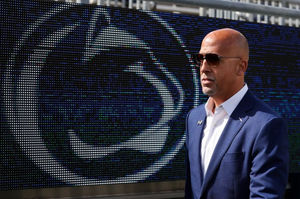Today, We'll Get Our First Look At Soccer's New Goal Line Technology
Goal line technology will be used in soccer will be used for the first time at this year's Confederations Cup, which starts today. There's long been a debate in soccer whether the sport should introduce more technology in its matches, especially when it comes to goal line technology. Soccer's a free-flowing game with no scheduled stoppages, and part of the pushback was that stopping play to review goals the way football reviews touchdowns would fundamentally change the game.
But those pining for it had a better argument. There aren't many goals in soccer, so each goal scored is that much more valuable, and each missed call is that much more criminal. And after Frank Lampard's clear equalizer in the 2010 World Cup against Germany (seen above) was disallowed, many fans and players alike said it was time for a major change. Lampard's goal would've made the game 2-2. Instead, England went on to lose 4-1.
So after the decision to integrate goal line technology was won, FIFA had to then decide which technology to use. Ten different systems pitched their goal line technology, but in the end, the International Football Association Board decided on German system called GoalControl-4D. GoalControl uses a network of 14 different cameras—seven focused on each goalmouth—that track the ball in within millimeters. When the ball crosses the plane, a signal will be sent to referees' accompanying wristwatch. It seems noninvasive and, more important, pretty flawless:
The Confederations Cup—an eight-team international tournament that serves as a teaser and a tuneup for next year's World Cup—starts today in a couple hours, which is when the world will get its first look at the new technology. Brazil, the Confederations Cup and World Cup host team, takes on Japan today at 3 p.m. Referees rarely miss goals, which is part of the reason why it's taken so long to develop technology for it, so it's a good bet that even though we likely won't see soccer's newest toy put to use, we'll be hearing a lot about it.
Common sense suggests that eventually goal line technology will be in every stadium, but for now, it's still too expensive. The Boston Globe GoalControl costs $267,000 to install per stadium, and another $4,000 to operate each game. For most clubs, spending that that kind of money to correct fluke occurrences, no matter how vital they are to eventual results, isn't an option.
GoalControl and systems like it can easily be expanded to other facets of the game, like offsides, but that seems a long way off if it's ever even coming. For now, though, we're fine with taking controversial goals out of the referees' hands. Who knows? Maybe this is the only thing keeping England from winning a World Cup.
North Dakota State Begins Its Push for Another FCS Title
Could Penn State Already Regret Firing James Franklin?
NBA Picks for Saturday November 22nd Best Basketball Bets
Notre Dame Being Ranked Over Miami Makes No Sense
- NBA Picks for Saturday November 22nd Best Basketball Bets
- Week 13 College Football Expert Betting Picks, Predictions
- Minnesota Wild vs. Pittsburgh Penguins Nov. 21st Betting Picks, Predictions
- Thursday Night November 20th College Basketball Betting Preview and Picks
- Bills vs. Texans Week 12 Thursday Night Football Top Betting Picks, Predictions
- NBA Best Bets Today: Wednesday November 19th Top Basketball Picks
- NHL Best Future Betting Picks To Lock in Before December












